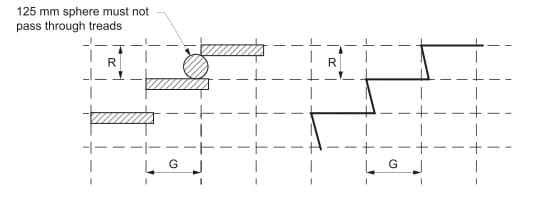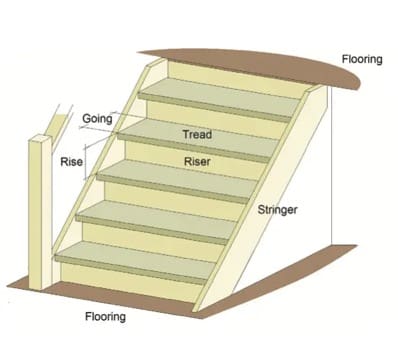Stairs

Internal Stair Requirements
Guide to Internal Stair Requirements
What every builder, installer and homeowner should know before working with stairs
When it comes to timber flooring, stairs can be one of the trickiest parts of the job. They’re not just another surface to cover – they’re a safety feature governed by strict building rules. The National Construction Code (NCC) outlines stair dimensions, slope requirements, and safety measures that must be met, while additional standards address slip resistance to help prevent accidents.
But here’s the catch:
- Even small changes in floor coverings can throw stair measurements out of tolerance.
- Requirements differ depending on whether the stairs serve habitable or non-habitable rooms.
- Since 2014, slip resistance standards apply to domestic stairs – and not all finishes on the market comply.
Many contractors and homeowners are surprised to learn that something as simple as replacing carpet with a timber overlay can cause compliance issues. If that happens, who’s responsible — the builder or the flooring contractor? The answer isn’t always straightforward.
That’s why this guide was created. Inside, you’ll find:
- The core NCC requirements for internal stairs
- Key terminology explained with supporting diagrams
- The tolerances allowed for riser and going dimensions
- What the slip resistance rules really mean in practice
- Practical tips to avoid disputes or non-compliance


Internal Stair Requirements
Why Slip Resistance Matters
- Required under the Building Code of Australia for paths of travel in commercial buildings
- Governed by AS4586 (new surface classification) and guided by HB198
- Critical for reducing the risk of accidents in both residential and commercial spaces
- Performance can change over time due to wear, cleaning and contamination
What the Full Guide Covers
- The four main test methods and where each applies (wet pendulum, dry floor friction, inclining platform tests)
- How to read P-class, R-class and CoF ratings on product data sheets
- Application guidance for different environments (kitchens, shopping centres, pool surrounds, aged care and more)
- The effect of coatings on performance – gloss level, coating chemistry and surface tension
- Maintenance considerations and how ongoing testing supports compliance over time
Preview Only
This page provides a high-level overview. The full ATFA Information Sheet includes:
- Detailed classification tables and thresholds
- Application-specific recommendations
- Examples of compliant and non-compliant finishes


